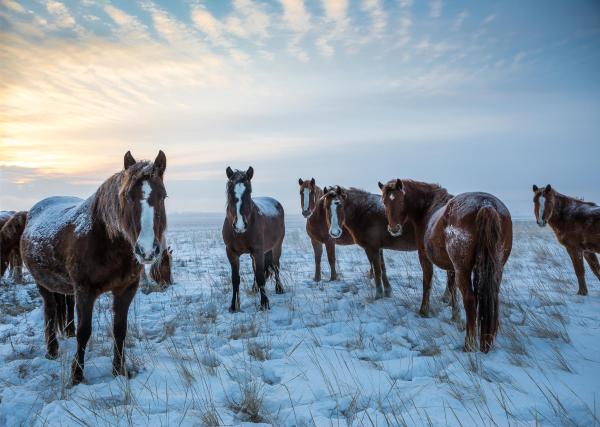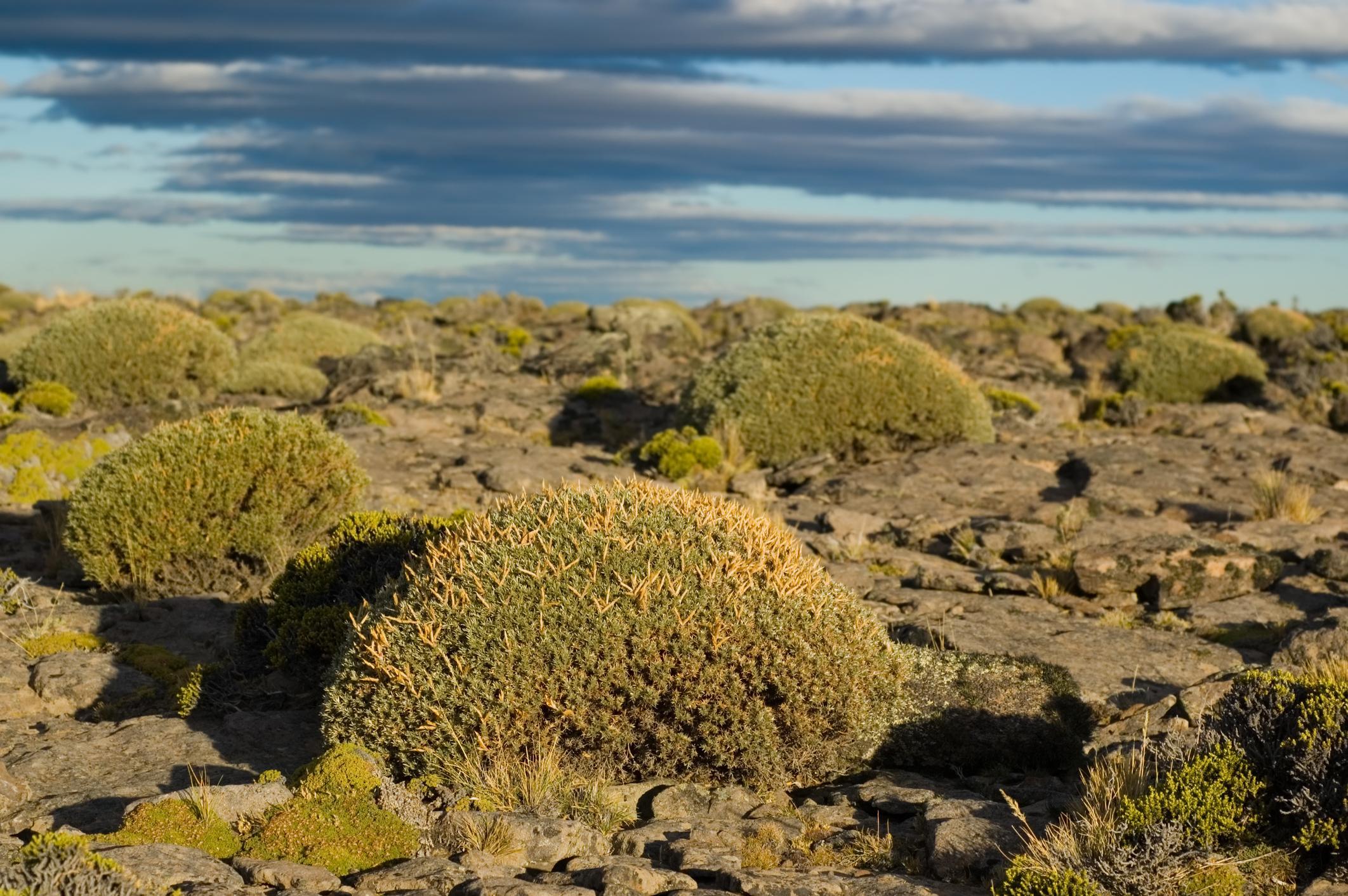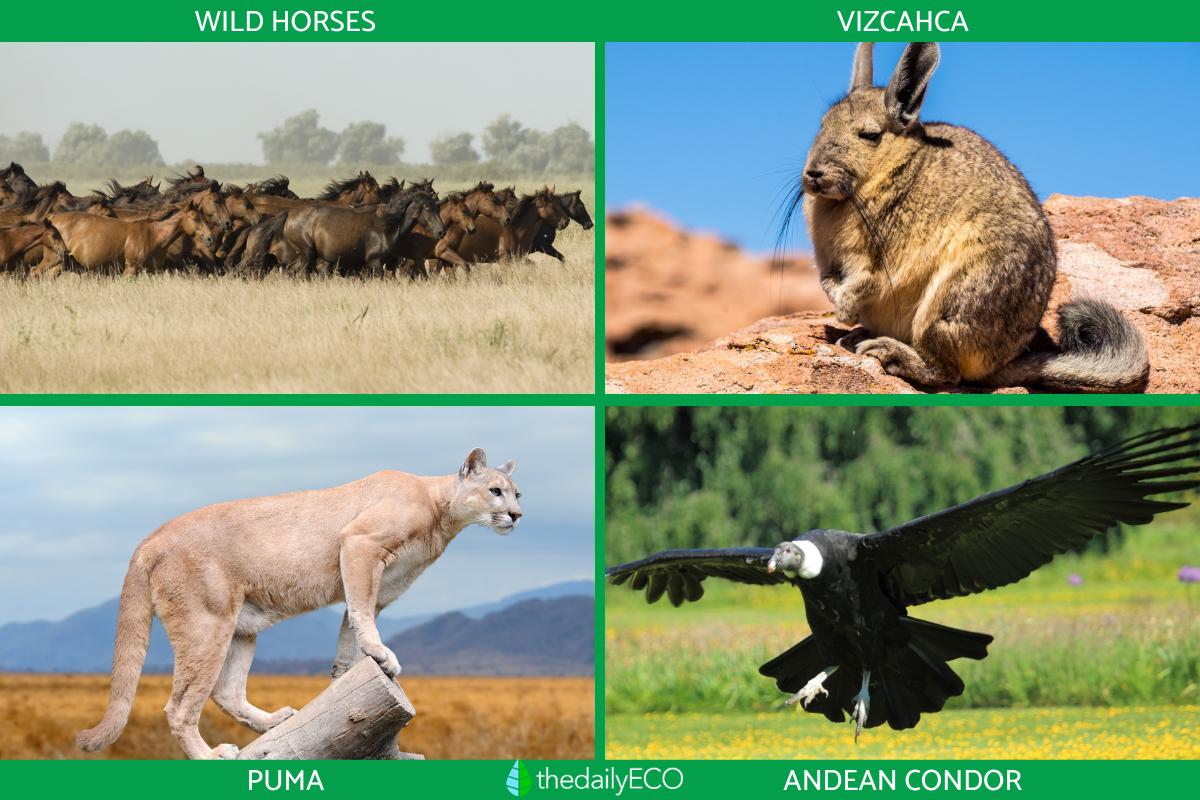Steppe Biome Animals and Plants


Steppes are a type of biome or terrestrial ecosystem. They are characterized by low levels of vegetation, low rainfall and an arid continental climate. Despite their name, steppe biomes are not defined by their altitude. There are steppes at both high and low elevations. They are wide plains which can be found in many parts of the world. Despite their low rainfall, they are home to many different plant and animal species. The specific steppe biome plants and animals will differ according to region. thedailyECO explains more by explaining the characteristics of steppe biomes and providing examples of their flora and fauna.
What is a steppe biome?
Biomes are a set of terrestrial ecosystems characteristic of specific biogeographical area. They are defined by their climate and the animal and plant species which inhabit this ecoregion. A steppe is a type of terrestrial biome that is characterized by low vegetation, low rainfall, and an arid continental climate. Although they are semi-arid, they can be covered in vegetation and are differentiated from deserts.
Some of the defining characteristics and features of steppe biomes are the following:
- They are located in various parts of the world such as North America, South America, Europe, Asia, Africa and Oceania.
- Steppes present characteristics of a semi-desert and the climate is continental arid and dry. Rainfall is low and varies from approximately 10-20"/250 to 500 mm per anum. The temperature differences between summer and winter are pronounced, presenting an annual average between 5 and 18 degrees Celsius. Summers are generally hot and dry and winters are cold with rain and even snowfall.
- Soils of the semi-desert steppe biome are fragile, contain many minerals and a low percentage of organic matter, which makes them unproductive for human agriculture. The presence of grasses can make them better pastures for animals. Soils can be brown or whitish, the latter indicating the presence of salts.
- In steppes that have more vegetation, chernozem soils are formed. These are a type of black soil that is produced by the accumulation of organic matter that does not decompose or does so slowly due to the prevailing conditions (drought and low temperatures for much of the year). This matter gives rise to a dark humus in the topsoil and makes these soils productive. Kastanozem soils are formed in other steppe biomes which have a lower percentage of humus and a high content of iron oxides.
- The vegetation is low, herbaceous and shrubby, adapted to long periods of water scarcity.
- The fauna is represented by large mammals (both herbivorous and carnivorous), small mammals such as rodents, numerous species of birds, insects and some reptiles. The presence of amphibians in these environments is very low due to the lack of water.
Now you know the definition of steppe biomes, we can look at the other different types of ecosystems.

Steppe plants (flora of steppe biomes)
As in other biomes, the plant species found in steppes partly determine the types of animals that inhabit the ecoregion. The dominant plant species are grasses, herbaceous plant species from various genera including Stipa, Festuca and Poa. Their roots form a dense network that allows them to absorb water more efficiently, giving them the advantage over other plant species.
These grasses grow fast, completing their life cycle when the dry season arrives. The stems and leaves dry up, to accumulate necessary reserves in their roots and dispersing seeds for the next growth period.
In addition to the grasses, there are other herbaceous plants adapted to the conditions of the steppe. These include therophytes which also complete their cycle quickly and release their seeds when the dry season begins. Geophytes are plants that overcome the inhospitable dry season due to reserves that accumulate in their roots, bulbs or tubers.
There are also shrub steppes where low-lying, stocky or cushion-shaped shrubs dominate with their reduced or absent leaves and sharp thorns. The flora of these environments is adapted to conditions of low moisture, varying temperatures, frost and strong winds.

Steppe animals (fauna of steppe biomes)
As stated above, the animals that live in steppe biomes need to be adapted to the vegetation that is present. This includes herbivorous animals that eat the plants, carnivores that eat the herbivores and others:
- Large herbivorous mammals: European bison, American bison, native African antelopes, guanacos distributed in South America and wild horses of the Asian continent.
- Rodent mammals: vizcachas, chinchilla rats, maras and prairie dogs, all native species of South America. Marmots are typical in the steppes of Asia.
- Carnivorous mammals: puma, gray and red foxes, wild cat and pampas cat originating in America.
- Birds: are numerous species of birds occupy the steppe biome such as the Patagonian rhea, Andean condor, southern partridge, quail, harriers, eagles, great bustards and many more.
- Reptiles: especially lizards and snakes.
- Insects: there is a great variety of insect species that live among the vegetation of the steppes and that serve as food for some animals, such as insectivorous birds.
Learn more about how geography affects plants and animals with our article on the differences between biomes and ecosystems.

Examples of steppe biomes
If you want to learn more about steppes, as well as their flora and fauna, we can look at some examples of steppes across the world:
Patagonian Steppe
Although also known as the Patagonian desert, the Patagonian steppe is a semi-desert that constitutes an ecoregion of Argentina in South America that occupies some 53,446,000 hectares. The soils of this ecoregion are poor, the is rainfall scarce and there are frosts during almost the whole year. The winds are also very strong. Typical vegetation is low, cushion-shaped, scrubby shrubs surrounded by areas of bare soil.
Learn more about the plants and animals of this steppe with our article on Andean flora and fauna.
Eastern European Steppe
The Eastern European steppes usually start their annual cycle with the melting of snow and the thawing of the ground. This allows a rapid development of plants of the genera Carex, Pulsatilla, Adonis, Hyacinthus, Iris and Tulipa, generally geophytes that have reserves in their roots and can develop rapidly during the favorable season.
North American Steppe
Distributed from southern Canada to northern Mexico, the North American steppes are commonly referred to as short-grass prairies. They include the area known as the Great Plains. They are characterized by a landscape of herbaceous plant species with isolated shrubs, the most important species of which are of the genus Bouteloua. Variations in temperature and humidity cause a large part of the animal species that live there to have burrowing habits.
Asian Steppe
The Asian steppe is characterized by extreme climatic conditions with hot summers and cold, dry winters. As in other steppes, the characteristic vegetation is xerophytic, i.e. plants adapted to strong droughts. You can learn more about these types of plant with our article which provides xerophytes definition and examples.
If you want to read similar articles to Steppe Biome Animals and Plants, we recommend you visit our Ecosystems category.
- Matteucci, S.D. (2011). Patagonian Steppe Ecoregion. Argentine Ecoregions and Ecosystem Complexes.
- Lewis, J.P. (1995). The biosphere and its ecosystems. An introduction to ecology.








